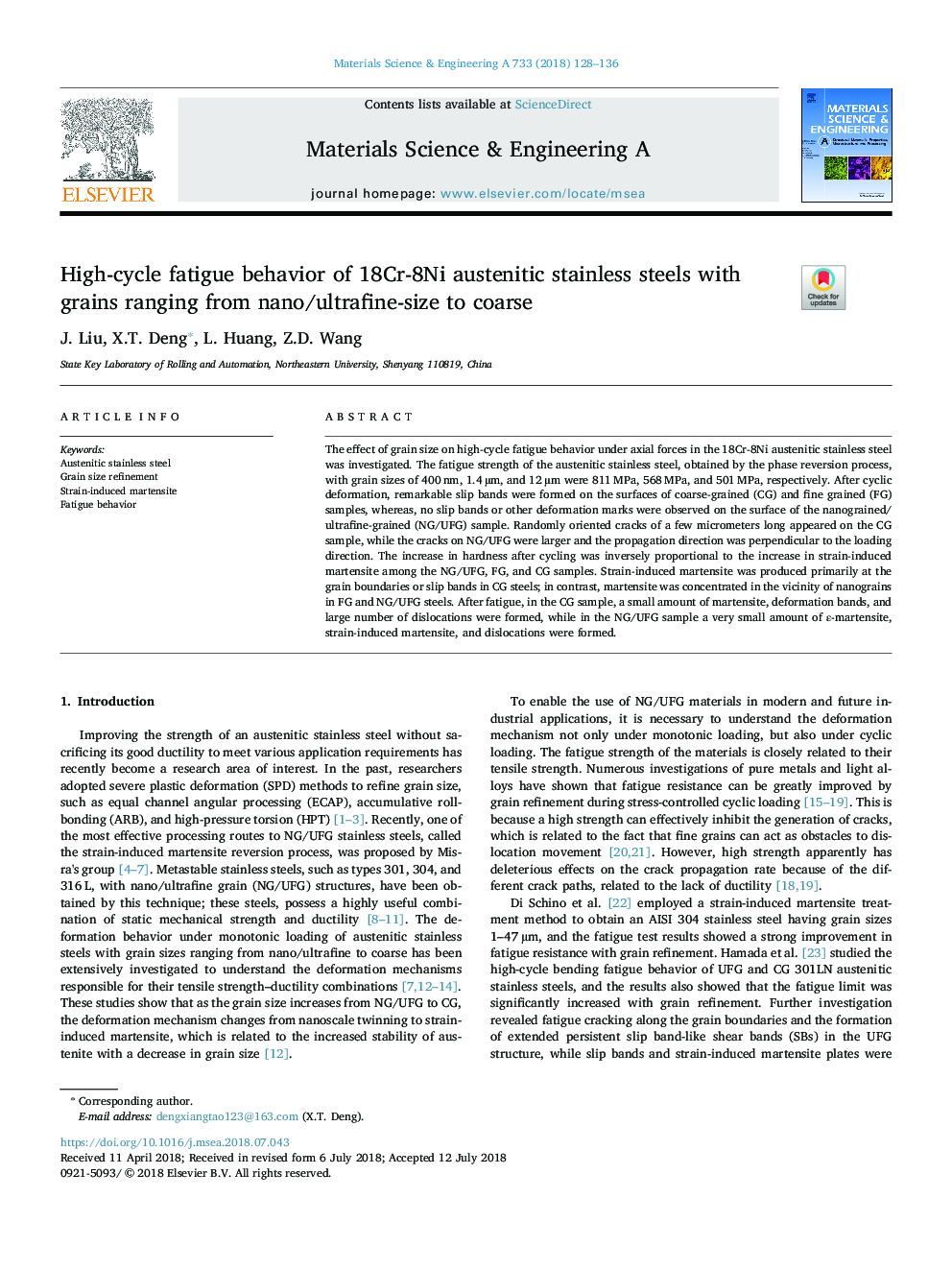| Article ID | Journal | Published Year | Pages | File Type |
|---|---|---|---|---|
| 7971596 | Materials Science and Engineering: A | 2018 | 9 Pages |
Abstract
The effect of grain size on high-cycle fatigue behavior under axial forces in the 18Cr-8Ni austenitic stainless steel was investigated. The fatigue strength of the austenitic stainless steel, obtained by the phase reversion process, with grain sizes of 400â¯nm, 1.4â¯Âµm, and 12â¯Âµm were 811â¯MPa, 568â¯MPa, and 501â¯MPa, respectively. After cyclic deformation, remarkable slip bands were formed on the surfaces of coarse-grained (CG) and fine grained (FG) samples, whereas, no slip bands or other deformation marks were observed on the surface of the nanograined/ultrafine-grained (NG/UFG) sample. Randomly oriented cracks of a few micrometers long appeared on the CG sample, while the cracks on NG/UFG were larger and the propagation direction was perpendicular to the loading direction. The increase in hardness after cycling was inversely proportional to the increase in strain-induced martensite among the NG/UFG, FG, and CG samples. Strain-induced martensite was produced primarily at the grain boundaries or slip bands in CG steels; in contrast, martensite was concentrated in the vicinity of nanograins in FG and NG/UFG steels. After fatigue, in the CG sample, a small amount of martensite, deformation bands, and large number of dislocations were formed, while in the NG/UFG sample a very small amount of ε-martensite, strain-induced martensite, and dislocations were formed.
Related Topics
Physical Sciences and Engineering
Materials Science
Materials Science (General)
Authors
J. Liu, X.T. Deng, L. Huang, Z.D. Wang,
